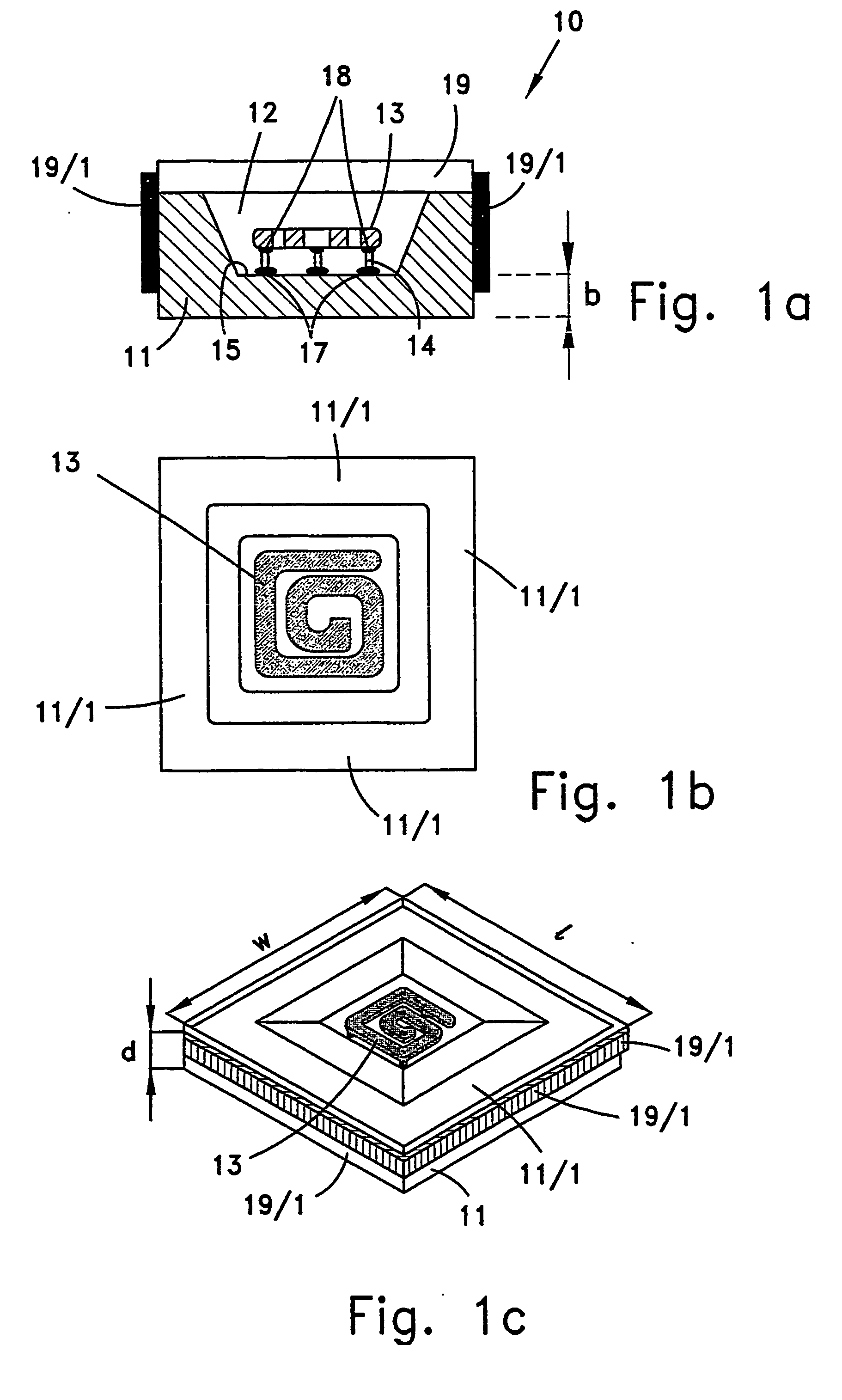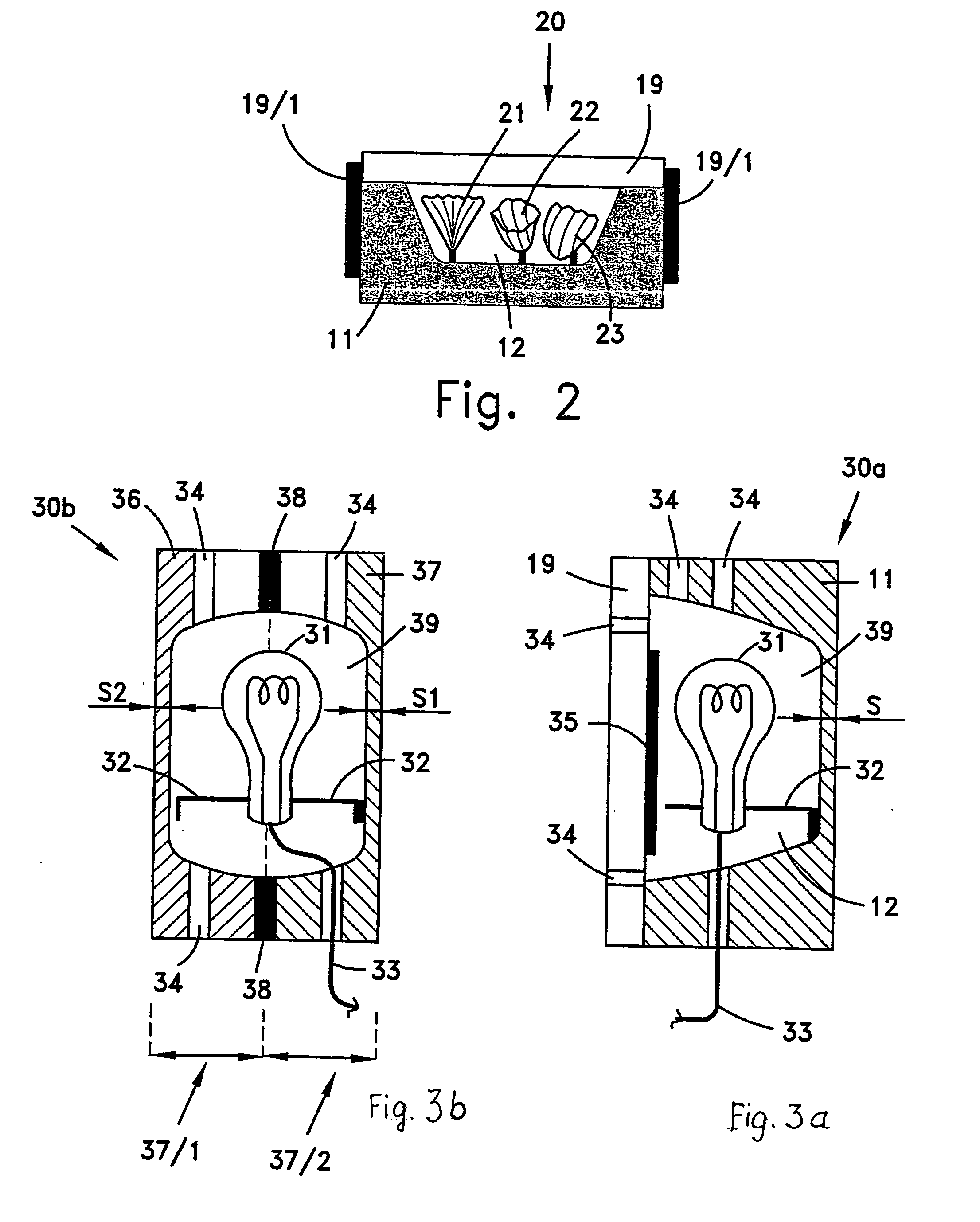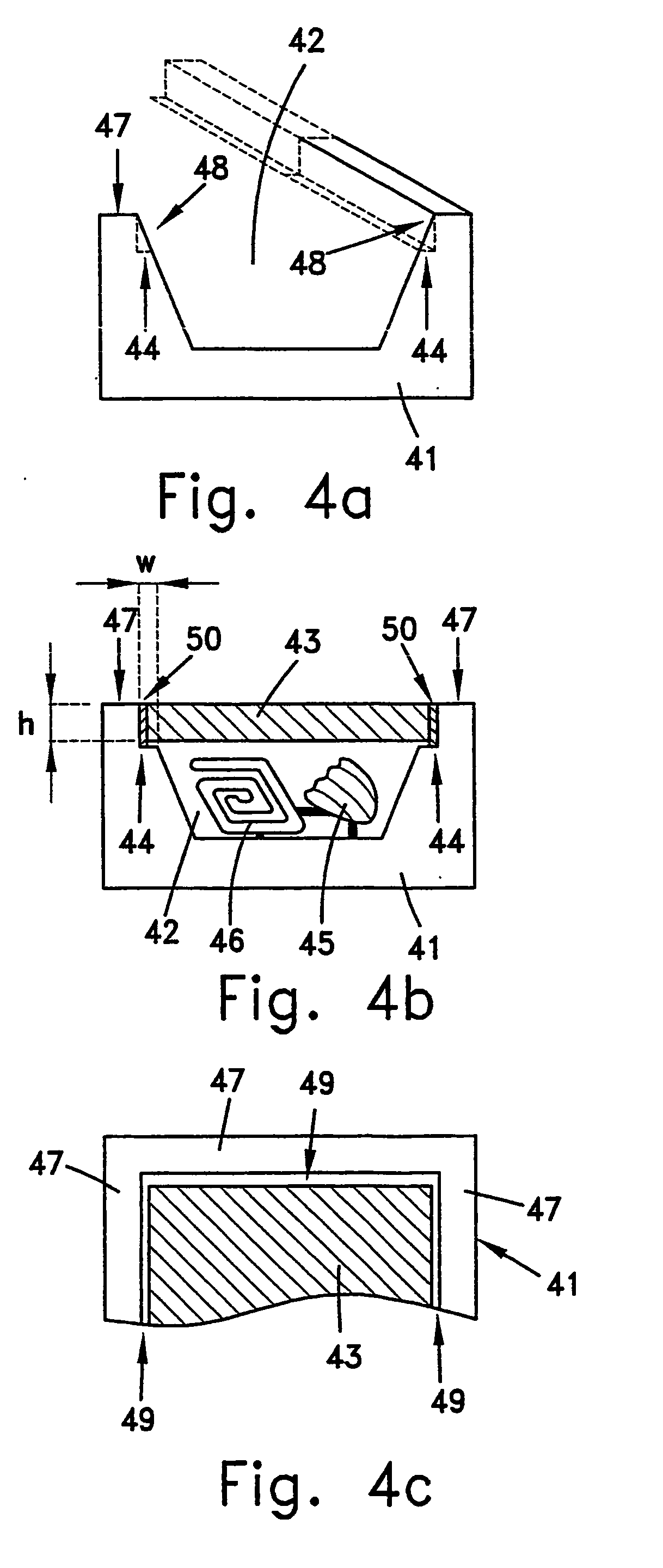Method for preparing decorative elements
a technology of decorative elements and methods, applied in the field of decoration, can solve the problems of high cost of laser technology, low cost of ornamental slabs, and inability to include three-dimensional ornamental elements,
- Summary
- Abstract
- Description
- Claims
- Application Information
AI Technical Summary
Benefits of technology
Problems solved by technology
Method used
Image
Examples
Embodiment Construction
[0080]FIG. 1 is a sectional view of an exemplary ornamental slab, according to the principles disclosed in the present invention. Ornamental slab 10 comprises, e.g., stone 11, in which cavity 12 is cut, preferably by sandblasting stone 11. Ornamental element 13 (best shown in FIG. 1b) is secured in cavity 12 by utilizing supporting elements 14. The proximal end of supporting elements 14 (in this example, a total of three supporting elements) is adhered (17) to bed 15 of cavity 12, by utilizing corresponding adhering agent (e.g., Epoxy resin). Then, ornamental element 13 is put in its place in cavity 12 and adhered (18) to the distal end of supporting elements 14. Covering sheet (e.g., made of glass) 19 is then put against the open side of cavity 12, for providing sealing (i.e., against water and moisture) and mechanical protection to ornamental element 13. Covering glass 19, which could be fully transparent in whole or in part, fully colored, or a combination of transparent and colo...
PUM
| Property | Measurement | Unit |
|---|---|---|
| thickness | aaaaa | aaaaa |
| size | aaaaa | aaaaa |
| thickness | aaaaa | aaaaa |
Abstract
Description
Claims
Application Information
 Login to View More
Login to View More - R&D
- Intellectual Property
- Life Sciences
- Materials
- Tech Scout
- Unparalleled Data Quality
- Higher Quality Content
- 60% Fewer Hallucinations
Browse by: Latest US Patents, China's latest patents, Technical Efficacy Thesaurus, Application Domain, Technology Topic, Popular Technical Reports.
© 2025 PatSnap. All rights reserved.Legal|Privacy policy|Modern Slavery Act Transparency Statement|Sitemap|About US| Contact US: help@patsnap.com



